
Salta is a province of Argentina, located in the northwest of the country. Neighboring provinces are from the east clockwise Formosa, Chaco, Santiago del Estero, Tucumán and Catamarca. It also surrounds Jujuy. To the north it borders Bolivia and Paraguay and to the west lies Chile.
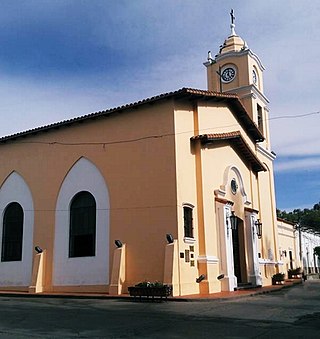
The Chicoana are a Diaguita tribe in the Salta Province, Argentina.
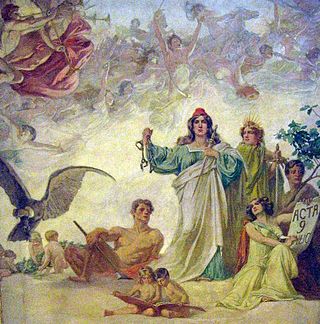
What today is commonly referred as the Independence of Argentina was declared on July 9, 1816, by the Congress of Tucumán. In reality, the congressmen who were assembled in Tucumán declared the independence of the United Provinces of South America, which is one of the official names of the Argentine Republic. The Federal League Provinces, at war with the United Provinces, were not allowed into the Congress. At the same time, several provinces from the Upper Peru that would later become part of present-day Bolivia, were represented at the Congress.

The Tren a las Nubes is a tourist train service in Salta Province, Argentina. The service runs along the eastern part of the Salta–Antofagasta railway line of the Belgrano Railway that connects the Argentine Northwest with the border in the Andes mountain range, over 4,220 metres (13,850 ft) above mean sea level, the fifth highest railway in the world. Originally built for economic and social reasons, it is now primarily of interest to tourists as a heritage railway, though cheaper tickets are also available for locals to use the train as transport.
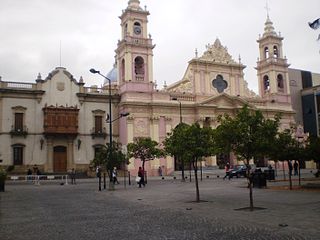
The Roman Catholic Archdiocese of Salta is in Argentina and is a metropolitan diocese, responsible for the suffragan Dioceses of Catamarca, Jujuy and Orán as well as the Territorial Prelatures of Cafayate and Humahuaca.

Iruya is a small town of population 1,070 in northwestern Argentina. It is located in the Salta Province of northwestern Argentina, and is the capital of the Iruya Department.
Cobos (Salta) is a village and rural municipality in Salta Province in northwestern Argentina.
El Jardín is a village and rural municipality in Salta Province in northwestern Argentina.

La Viña (Salta) is a village and rural municipality in Salta Province in northwestern Argentina.
Pacará is a village and rural municipality in Salta Province in northwestern Argentina.
Santa Bárbara (Salta) is a village and rural municipality in Cafayate Department located in Salta Province in northwestern Argentina.
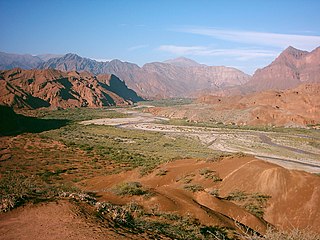
Tolombón is a village and rural municipality in Salta Province in northwestern Argentina. It is in the Cafayate department. It is 14 km south of Cafayate. Currently, only 255 people live there.

Coronel Moldes (Salta) is a town and municipality in Salta Province in northwestern Argentina.
El Tala is a town and municipality in Salta Province in northwestern Argentina.
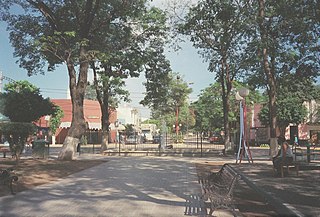
Embarcación (Salta) is a town and municipality in Salta Province in northwestern Argentina.
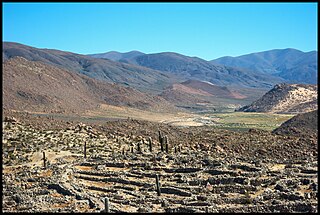
Tastil is an archaeological site near Santa Rosa de Tastil, Salta Province, Argentina.
Chiyayoc is a small village in northwestern Argentina. It is part of the Iruya Department in the Salta Province. The village is located at an elevation of 3100 meters, 4 km east of the village of Salta and 9 km north of the village of Iruya.

Iruya is a department is located in the north of Salta Province in northwest Argentina in the high altitude basin of the Bermejo River. It is one of 23 administrative units in the province.
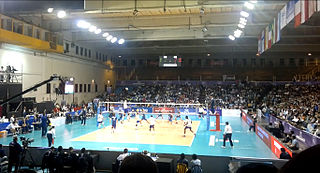
Polideportivo Delmi, is an arena in Salta, Argentina. It is primarily used for volleyball and basketball. It opened in 1986 and holds 6,000 spectators.

Albertogaudrya is an extinct genus of astrapotherian mammal that lived in present-day Patagonia and Salta, Argentina during the Eocene 48.6 to 37.2 million years ago. Fossils of Albertogaudrya have been found in the Lumbrera and Sarmiento Formations. It is named after French palaeontologist Albert Gaudry.













